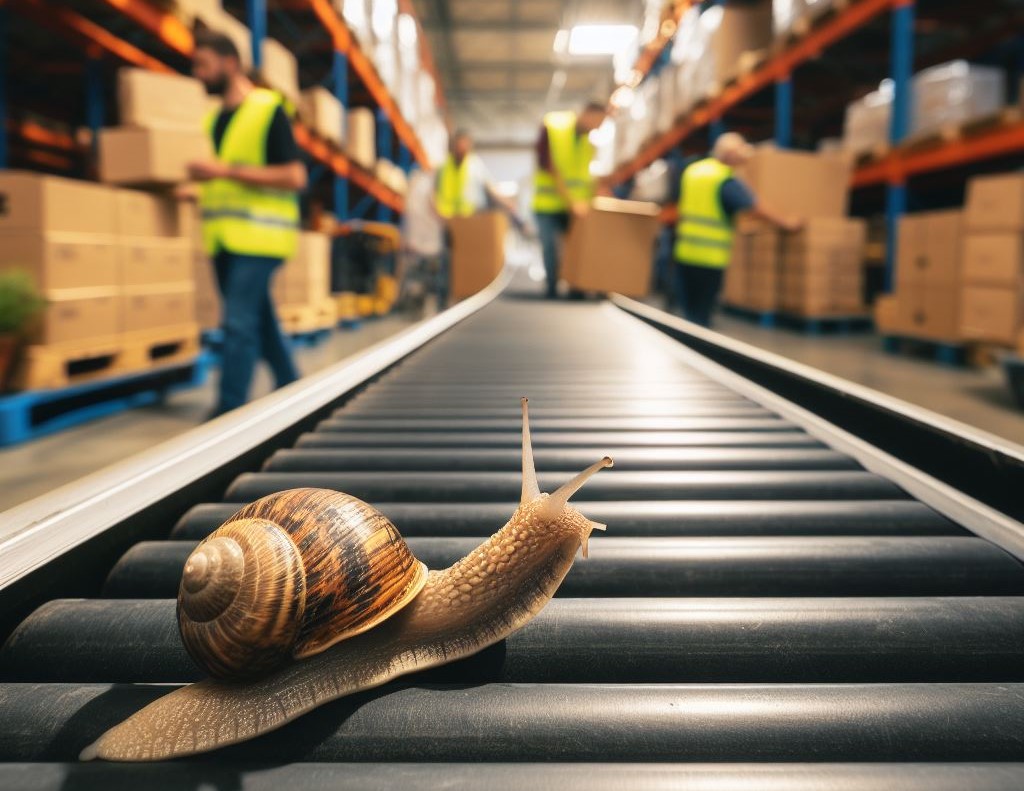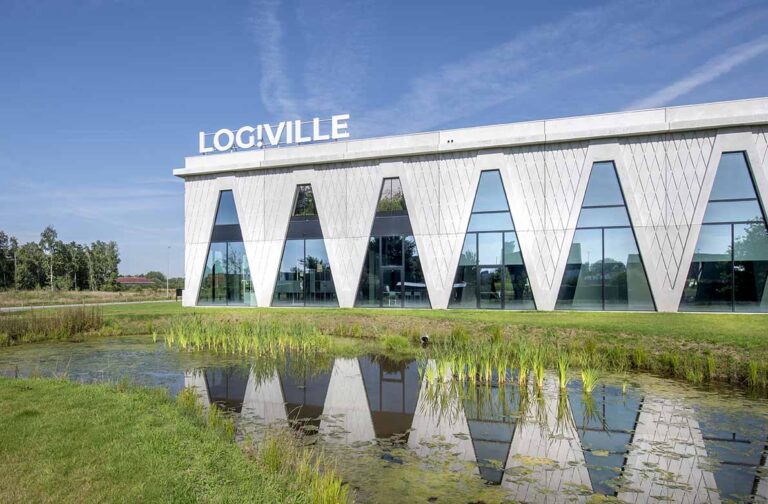Supply chain innovation: has the time of Slow Logistics finally arrived?

Some 13 years ago, VIL launched the Slow Logistics research project, which dared to question the common practice of ‘delivering as fast as possible’. The starting point then was the ‘total logistics cost approach’. The concept – partly due to the rise of e-commerce and fast deliveries – fell into oblivion. But suddenly it is a hot topic again, partly because of the need for more sustainable and climate-friendly chains and partly because of the (green) energy costs that will make chains much more expensive. The remarkable thing is that the proponents are now shippers.
The French logistics site Voxlog.fr recently published an opinion piece featuring Yann de Feraudy, president of the association of corporate logistics experts France Supply Chain, in which he advocates ‘frugal’ and, above all, slower logistics chains. The remarkable thing about this plea is that it comes from an organisation that mainly groups shippers: industrial companies, traders and retailers.
De Feraudy notes that over the past 50 years, supply chains have seen numerous fundamental changes driven by a constant search for greater efficiency, shortening lead times – think ‘just-in-time’ – and globalisation of the economy. “All these achievements could be achieved thanks to abundant and cheap fossil fuels, raw material reserves that were considered inexhaustible and the failure to factor in external costs, starting with greenhouse gases,” he says. “But we have reached the limits. The era of cheap, abundant energy that allowed us to set up and develop these supply chains is coming to an end. This will force us to rethink our processes, drastically and quickly,” he argues.
Sacrificing sacred cows
Traditionally, there have been four main parameters for adjusting supply chains: service (customer satisfaction), cost (opex), asset utilisation (capex) and working capital (cash). A fifth parameter has been gaining importance in recent years: sustainability and climate.
He therefore asks whether we are “willing to sacrifice our sacred cows – speed and service, regardless of environmental impact, as well as hyper-optimised inventories – to find a new, reasonable balance compatible with the challenges ahead”.
Within France Supply Chain, a thought process has been launched to propose measures that could rapidly reduce carbon emissions and the environmental impact of supply chains. Members of the think tank are advocating “leaner” supply chains. “That means rethinking the design of flows and, above all, slowing them down,” de Feraudy argues.
According to him, supply chains are under extreme pressure today because of minimal stocks. The smallest grain of sand can disrupt them, as the ‘polycrisis’ of recent years proved. This tension disorganises logistics systems and puts pressure on those doing the work, often at the end of the chain. It prevents structural optimisations such as bundling and ultimately undermines the resilience of chains.
Five proposals in the short term
Accordingly, in his opinion piece – “L’innovation en Supply Chain : Slow Logistics”, de Feraudy formulates five proposals to achieve those ‘leaner’ supply chains in the fairly short term.
#1 Slow down supply chains
A first proposal is to reduce the speed at which trucks are allowed to travel on motorways from 90 km/h to 80 km/h. Such a measure could reduce both carbon emissions and energy bills by simply consuming less. This would have an impact on stocks though (1-2% increase) and even lead to slightly less optimal networks.
#2 – Switching to ‘reasonable deliveries’
The acceleration of e-commerce flows is staggering. In just a few years, we have gone from 5 days to 10 minutes, so to speak. “It is time to question the viability (ecologically, socially and economically) and profitability of ‘in no time’ delivery models. France Supply Chain proposes voluntarily opting for a 48-hour delivery period, which would allow bundling of transports and thus optimisation (and reduction of carbon emissions. It would also be a good idea for online shops to offer three delivery solutions, with the most energy-efficient one at the top of the list),” de Feraudy argues.
#3 Calculating the cost of CO2
Charging customers for CO2 emissions could also have an impact, although de Feraudy says an obligation is out of the question. “We think it is more virtuous and sustainable to encourage players to ‘do the right thing’. We recommend that the financial evaluation of projects and contracts should value the tonne of carbon at 200 euros (minimum from 2024).
#4 Winning the multimodal battle
In France, rail’s share of the freight mix has fallen from 16% to 9%, in favour of road transport, which is more flexible, often cheaper and faster. “To increase this market share, the government will have to guarantee service quality and reduce costs as part of an ambitious and credible plan. And there is not only rail (ed: read ‘also inland waterways’),” he argues.
#5 Frame urban deliveries
“We also need to think about the overall organisation of urban logistics. France Supply Chain has launched an initiative to create optimisation models and make recommendations to city governments. For example, one could consider allowing a limited number of operators to deliver in the city (on the basis of tenders to safeguard competition),” de Feraudy said.
Not a new concept
The idea of slow logistics is not new. More than a decade ago, there were already voices calling for slowing down supply chains. The approach then was economic rather than ecological, arguing that focusing on speed does not always lead to the highest efficiency. After all, ‘just in time’ is often equated with ‘as fast as possible’, while reliability is far more important than speed in most cases.
Indeed, freeing up time can ensure more efficient organisation and/or execution of logistics activities. For instance, reducing ‘rush’ in logistics processes can lead to lower operational costs, as less frequent deliveries have to be made. One can also bundle more shipments and thus reduce transport movements.
VIL examined slow logistics as early as 2010
Back in 2010, together with a number of companies, VIL calculated possible cost savings of slow logistics based on the Total Logistics Cost Model. At that time, the feasibility of proposed solutions was also examined and two specific cases were tested in practice, specifically in the distribution of packaged oils and the distribution of pet food.
Three interpretations of the slow logistics concept were worked out in the process: switching to fixed delivery dates with a fixed delivery frequency per region (or fixed rounds); switching the production process from ‘make to order’ to ‘made to stock’; and bundling partial loads over time.
“Those cases showed that slow logistics is financially interesting because it allows significant savings on transport costs, as well as on operating costs, such as staff deployment. There are also qualitative benefits: it guarantees better delivery reliability to customers, it ‘de-stresses’ staff and it is also easier to optimise production processes,” says VIL manager Steve Sel, who led the project at the time.
“The positive outcome of those cases and the fact that the participants further implemented the concept prove the feasibility of the slow logistics concept,” he adds. Yet he nuances: “That feasibility partly depends on the type of goods. In FMCG, for example, implementation is more difficult. Slow logistics also requires some adaptability from customers and of the sales managers”.
Now more opportunities for breakthrough
Despite the benefits of the concept – which were thus confirmed in the VIL project – it cannot be said that slow logistics had a breakthrough. Probably the rise of e-commerce was the issue: not only B2C but also B2B customers have become increasingly accustomed to fast deliveries. They are disappointed if they have to wait for products, which can affect customer satisfaction.
Today, the cards are different, as Feraudy argues. Gone are the days of greenwashing and pretending to be much more sustainable than one is. Road transport in particular – the backbone of the European economy – is in the sights of the climate regulator. Truck manufacturers are going to be obliged to sell more electric (and therefore more expensive) vehicles. A whole charging network has to be built out. Other economic players will also have to electrify, so electricity will in all likelihood become more expensive. Transport will become more expensive as a result. At the same time, CO2 reporting will force greenwashers to act. In other words, sustainability and climate will become ‘game changers’ in logistics.
This will increase interest in slow logistics: by deliberately slowing down logistics processes, one can both increase economic efficiency and reduce climate impact. Slowing down flows also makes it easier to bundle cargos and use alternative modes of transport (rail, inland navigation and short sea). In other words, slow logistics makes the ‘modal shift’ more accessible.
Much will depend on industry, trade and retail and their willingness – despite the expectations of their customers, who will still expect fast deliveries – to make the switch. The French shippers’ plea already opens up new prospects for slow logistics.



